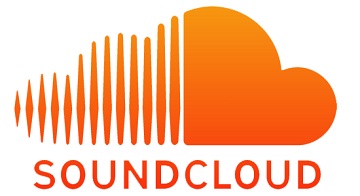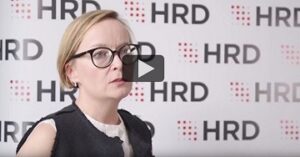Q&A: Soundcloud talks about the importance of creativity outside of work
- 5 Min Read
VP Global Head of People at Soundcloud, Noor Van Boven joined HRD Connect to discuss how out of work activities can benefit the workplace. She also talks about how companies can make sure their employees feel they are working “with” organisations rather than “for.” Through technology, the ability to work remotely has increased – How […]
- Author: Unzela Khan
- Date published: Jun 22, 2017
- Categories

VP Global Head of People at Soundcloud, Noor Van Boven joined HRD Connect to discuss how out of work activities can benefit the workplace. She also talks about how companies can make sure their employees feel they are working “with” organisations rather than “for.”
Through technology, the ability to work remotely has increased – How can HR leaders ensure there is a balance between the ‘work to live’ philosophy rather than ‘living to work’?
It’s an interesting question because the question is, ‘to what extent’ and an employer really wants to take that responsibility. I think you need to make sure that you have a culture in which you encourage employees to do other stuff outside of work. This is for multiple reasons, especially if you look at younger generations. They are motivated and energised by stuff that they want to do on the side. A creative atmosphere outside of work will encourage problem solving and innovation solutions at work. For example, in Soundcloud, people get a Creative and Wellness bonus so we can reimburse up to 350 Euros and they can buy anything they like, supporting something they want to do. For example, I approved roller-skates for someone in the team last week.
The other thing is that, I think we have passed the age that is around managing our work – we manage output. If you get a good handle on what kind of output you can expect on certain levels, it doesn’t matter when people do it, I would challenge that it doesn’t matter how much time it takes. If you can solve the problem in 32 hours on our quality of standards, then you’ve saved yourself eight hours to do something fun. Maybe the next challenge, you thought it would take 40 hours and you took 45 hours – that’s also okay.
Read more about Health & Wellbeing
How can HR strategy ensure that employees feel they are working ‘with’ organisations not ‘for’?
I think this has to do with how you approach work in general. If your organisation is very hierarchical and top down driven when we are talking about decision making, or the design of processes relevant for all employees, you automatically create this culture of “you work for us, and these are our guidelines and you have to obey them.”
If you transform to a culture where you are having a high participation of your employees, and you promote a user led innovation in your organisation which will create a very different dynamic, they become part of how we work.
Decision-making is a key part of that, if your decision-making is based on hierarchy levels, people will feel very strongly that they work for an organisation. If you bring back decision-making to people who can make the decisions no matter where they are in the organisation, they feel that they are operating more are entrepreneurs and have more self-directedness, they feel that they are the organisation rather than working for the organisation.
In your presentation, you highlighted that Gen Y and Gen Z’s preferred method of communication is social media or online and mobile communication – How can baby boomers and Gen X find common ground through the demands of these generations?
Two things, one, I challenge that they have to keep up with it, which they do to a certain extent, however I don’t think it’s necessary to find one way of communicating in the organisation. I think the power is in providing diversity of communication channels, so make sure when you lend new information that you use different channels. The different generations work through information in very different ways. They provide it in different ways such as video and audio.
For example, if people want to contact our people team, they can talk to us face to face because there are generations who prefer that. We also have a technical platform where people can look things up themselves, we even have an old-fashioned contact form and an email address.
In terms of employee benefits and rewards, how do you cater to such a diverse range of needs, especially when 4-5 generations are working together?
For our organisation, we don’t have a high variety of flexibility and benefits yet, it is not a life-cycle that we are in. At the moment, if we could afford to have more flexible benefits packages it will definitely be one of those things that I would like to look into, I think it’s very important for generational diversity to offer more flexibility in your benefits, and more choices in the benefits that you offer.
At the moment, the approach we have is that there is a level of trade-offs, for example our basic package is base salary and equity, and we see the different generations place different importance on both of those components. This is where we do offer flexibility, for example higher cash and lower equity or the other way around. Looking at all the other benefits, we take different benefits that we see the people find important, or we do surveys with our employee base.








